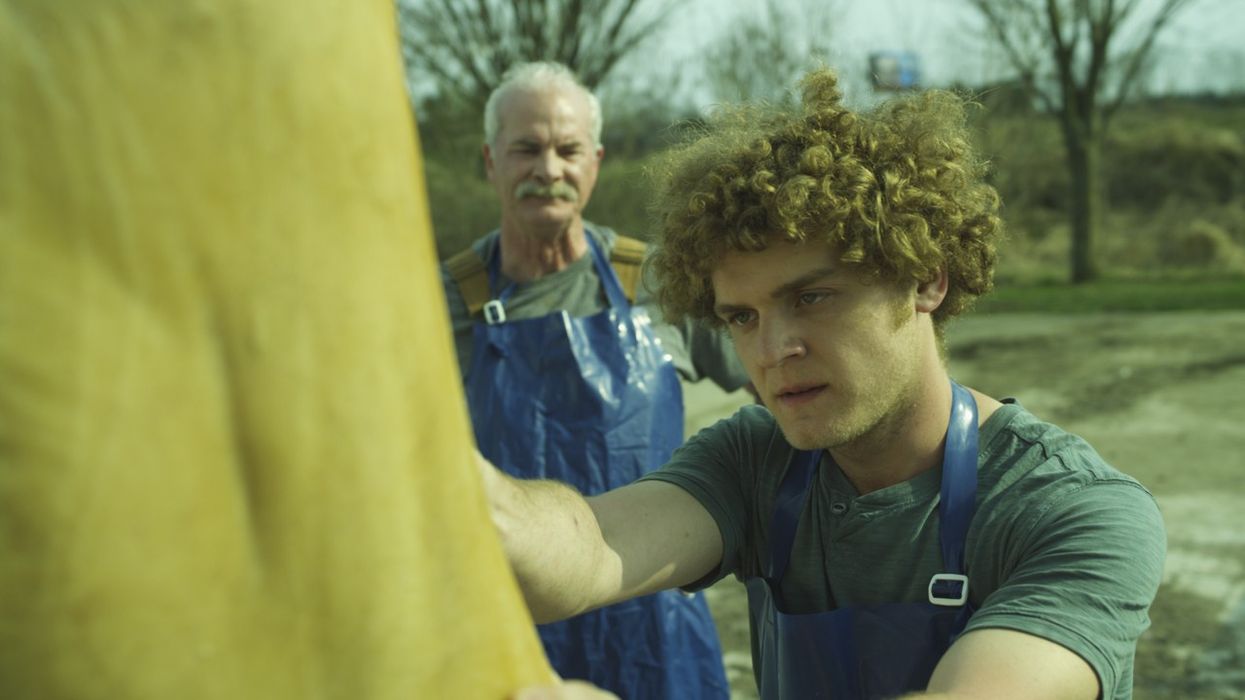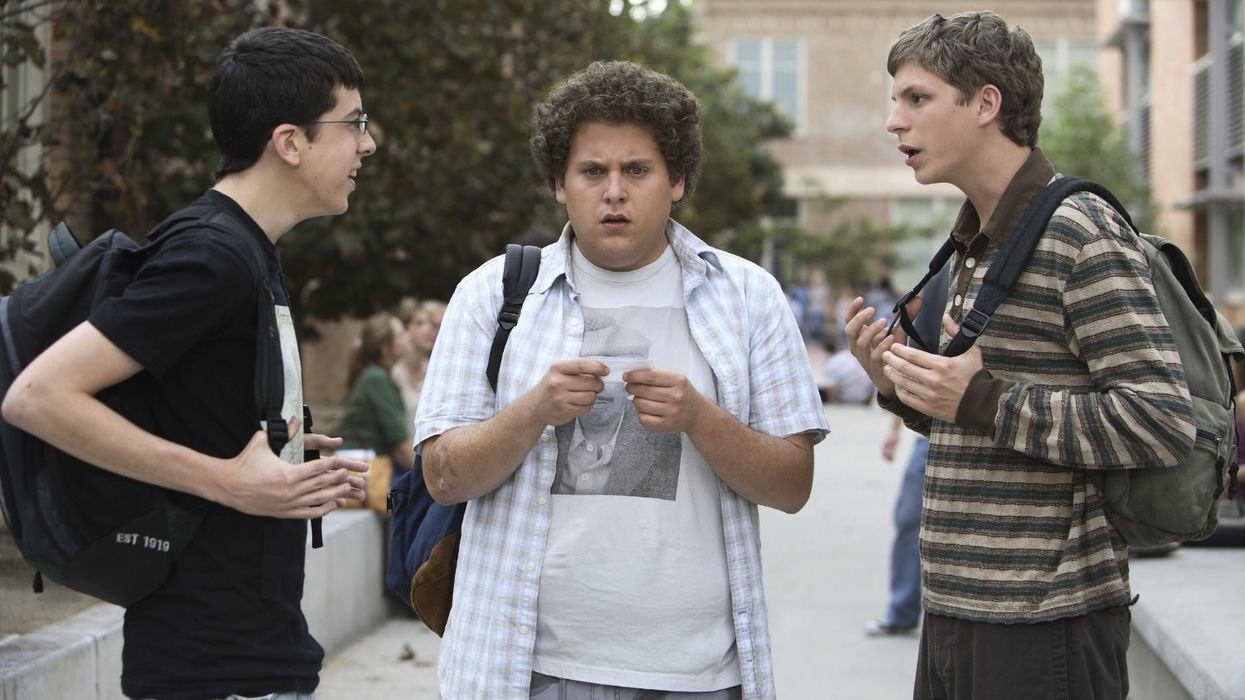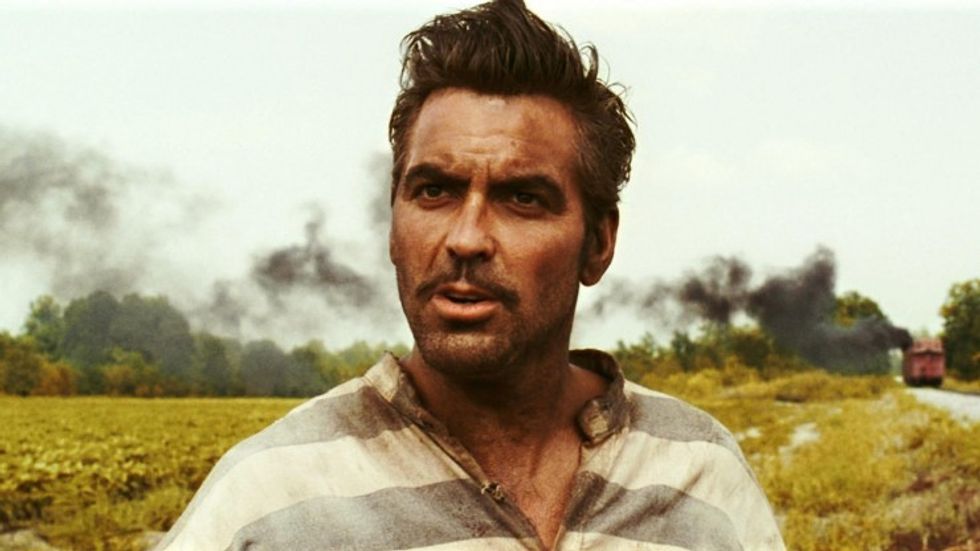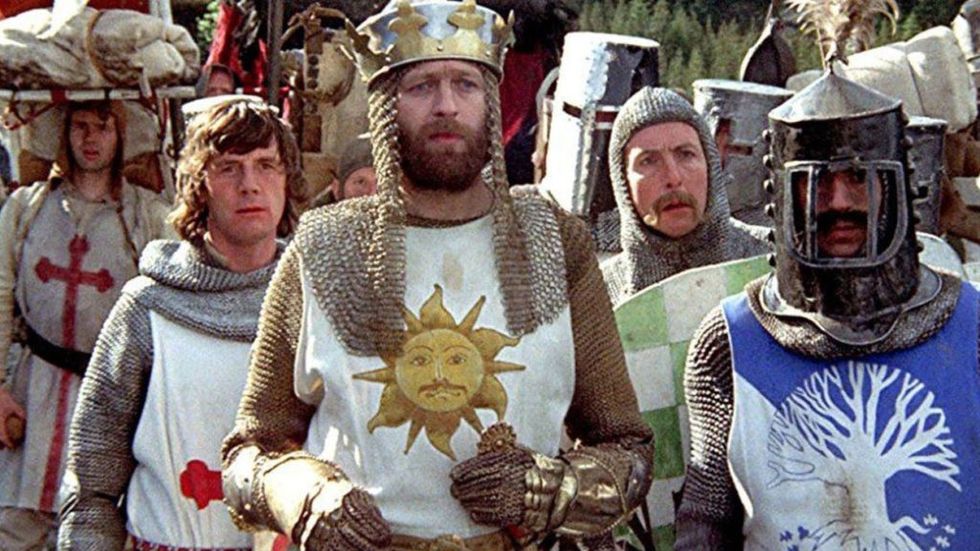How I Released My Controversial SXSW Short Online

“There hasn’t been an edgy book, like American Psycho, for decades. People don’t want to be associated with something politically incorrect because the backlash is so immediate online. They play safer because of that.”
– Chuck Palahniuk, The Guardian, November 2014
This quote saddens me; are we supposed to stop making provocative work out of fear of an online backlash? Is that not a form of self-censorship? How can we make bold, challenging work and not be afraid to bring it to the greater public?
I have a personal stake in these questions. My UCLA MFA Thesis Film The Slaughter deals with the controversial practice of slaughtering animals for food. It premiered at the 2013 SXSW film festival and was a finalist for the Student Academy Awards. It also made a jury member quit my hometown East Lansing Film Festival, where it went on to win the prize for Best Student Short Film.
The film is an unflinching look at a damaged father/son relationship that finally comes to a head during the humane slaughter of a pig. It had a very healthy yearlong festival run that included Locarno, BFI London, and Ann Arbor, but when it came time to release it online, I was hesitant; could I really handle the unbridled craziness of the Internet?
My personal philosophy is that fear is a compass; the more afraid you are to perform an action, the more essential that action is to your development as a human being.
So last October I overcame my fears and released The Slaughter online: it was featured on Short of the Week, Filmmaker, Indiewire’s The Playlist, selected as a Vimeo Staff Pick and viewed over 90,000 times.
Check out my film below. (Warning: Contains graphic violence)
It also, as anticipated, generated some backlash. Fortunately, I was prepared. Here’s how I did it.
The Filmmaking Process
Do Your Homework
If you want to make a controversial film, there should be a good reason. Mine arose out of my experiences with humane slaughter on my family’s pig farm. As I went through the process myself, I realized that it had become hidden; people used to raise their own livestock, which meant they were aware of the sheer effort involved in raising and slaughtering an animal for food. This in turn limited the amount of meat they consumed.
Food animals are now almost entirely raised on factory farms, which has had profound consequences for animal rights, human health and the environment. After much research and contemplation, I decided to take a risk and make a film about it.
But first I did my homework. I read every book on food and animal welfare I could find and watched several documentaries on factory farms and anything else related to the subject.
Clearly Communicate Your Intentions to Potential Collaborators
This research served me well as I put together my presentation packet for the film, which went to all potential actors and crew members. It included a director’s statement and answered questions about the actual slaughter (a version of this document). It also made my initial cinematographer, a muscled male carnivore, uncomfortable enough to quit the film.
The packet was a way to help people understand who I was, what I stood for, and that the entire process would be safe and humane. This was an essential part of getting this film made; it inspired trust in my collaborators, and made them feel like they were part of something larger than a student thesis film.
To complete the experience, at the end of the film the cast and crew came together to eat the animal portrayed in the film. For almost everyone involved, it was the first time they’d ever eaten an animal they’d personally known.
Be Responsible and Safe
The slaughter portrayed in the film was done by professionals in the actors' wardrobe. The film was cleared by SAG, and filmed with a third camera for legal purposes.
After a grueling post-production period, I was thrilled with the film’s response on the festival circuit. But as the festival run continued, I was a bit puzzled that there was no backlash, aside from one critic who called it an “after school special.”
There are many reasons for this, but I think one of them is that festival audiences are looking for challenging, different material. They also went to an actual movie theater, where they sat and watched the whole film. Finally, I was also in attendance for Q&As at many of these screenings; it takes more courage to criticize someone in person, as opposed to the Internet, where there’s the shelter of anonymity.
I had to wait until the online release to really feel the heat.
The Online Release
My preparation for the launch felt like that of a presidential candidate. I wrote about my intentions for Filmmaker Magazine, wrote and rewrote the body copy on my Vimeo page, reached out to various media, and reread books like Jonathan Safran Foer’s Eating Animals. I wanted to be ready for whatever might come. Finally, on Monday, October 20th, 2014, I launched.
Here’s what I learned:
Go Vimeo
Vimeo has built a passionate base of viewers eager to find challenging, well made content. They have also built a respectful community, unlike YouTube, where all human hatred and ugliness lurks. The potential to get Staff Picked (which, especially with this content, was far from assured), was the second major consideration in deciding to release exclusively on Vimeo.
Create Context
I wanted my Vimeo page to have all relevant information about the film. First and foremost was my director’s statement and notes on the actual slaughter of the pig. This was easily accessible for anyone with a shred on interest in the film’s background. In doing so, I tried my best to recreate the context that a festival screening might have, where I could answer any immediate questions.
Discuss the Issues, Not the Filmmaking
I also decided to be present in the discussion around the film, to use my real name, and to be as cordial, calm and reasonable as possible. I always thanked people for engaging in the discussion, and did my best to craft thoughtful responses to their points. I chose to only respond to comments relating to the film’s issues, not its craft. Everyone is entitled to their opinion of whether it’s a good film. I accepted early on, as all filmmakers should, that my film isn’t for everyone.
Some of the most common criticisms and my responses:
- If you actually killed a pig, why not kill an actor? (Because, unlike pigs, we don’t raise millions of actors a year, in terrible conditions, for food. It’s also illegal to kill actors, at least in the state of Michigan.)
- Why not use a dummy, or CGI? (Part of making this film was to confront people with the realities behind the hidden choices they make every day. Pig dummies and animators, unfortunately, would never have brought that across as effectively.)
- You benefited artistically from this animal’s death. (Undeniable, but the animal was slated for slaughter regardless; it was also eaten after living a good life.)
- There’s no such thing as a “humane slaughter.” (If there's such a thing as an inhumane slaughter, then a humane slaughter exists, if only by degree. For examples of inhumane slaughter I highly recommend the Humane Farming Association’s documentary Death on a Factory Farm.)
These were the four most common issues raised, but there were many other separate discussions about the morality of eating animals, which is a big part of what the film is about.
All this served as a remarkable opportunity to have a passionate, engaged discussion with my audience, to see what kind of people the film affected, and to learn more about the issues involved. Some people hated me (including one particularly vengeful Short of the Week commenter, who cursed me to be haunted by the pig’s ghost); this was something I had to accept.
The bottom line is that if you want to create a discussion, you need people to discuss with. Ultimately, criticism can also be seen as a form of validation; like praise, all impactful work draws both.
The Internet Destroys Context
As I went along through the release, responding to relevant comments, I began to realize that some of the angriest responses were coming from people who had never even watched the film.
The film’s Vimeo page, where there was the most context, was overwhelmingly positive. The places where people were most enraged were often Facebook posts from sites that had written about the film. If you think about it, this is the minimal possible context for a complex idea.
The Vimeo Page -> The Site’s Article -> That Article’s Facebook Blurb
This meant that some people were often responding to a summary of a review of the film, not the film itself. This also meant that the same issue (the “killing an actor” question comes to mind) came up repeatedly, in several different contexts.
This is the joy and sorrow of the Internet :tremendously democratic, but equally ADD. I learned to appreciate the fact that sometimes people just need to skim-and-rage.
Conclusions
Through all of this, I was able to participate in a meaningful discussion about issues that are very important to me. Along the way I learned to love criticism. Yes, it was stressful, but I did get some very touching responses alongside some of the more brutal criticism. If I hadn’t released the film online, this audience and their reactions would have been lost. Each of those comments, like the ones below, were a small gift in themselves.
As a filmmaker, I want to create work that raises fundamental questions about the society we live in; these kinds of questions should receive passionate and conflicting answers. My response to the Chuck Palahniuk quote that opened this article is that, in the Internet age, we all have the option to engage in the dialogue our work creates.
I believe that if you really try to listen to and respect people, you will find that most of them are sane, intelligent and passionate; the kind of people you can learn from. This extends beyond filmmaking; a diversity of people and opinions, as well as the discussion they create, is the foundation of a democratic society.
On the Internet, everyone has a voice. As filmmakers, we can choose to embrace that fact, to engage with our audiences, or we can ignore them. After all I’ve been through with this film I still choose the former.



















